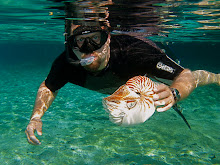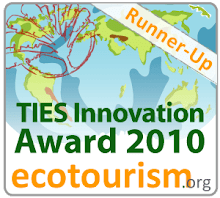Now it is back to Suriname with a group of 13 people to continue Oceanic Society’s Leatherback sea turtle monitoring project. I have been going to Suriname since 2001, it is a wonderful country with vibrant wildlife populations. This research trip will take me back to the leatherback nesting beaches of Galibi Nature Reserve. Galibi is pretty remote, a 2-1/2 hour bus ride followed by another 2-1/2 hour boat ride gets you to one of the most productive leatherback nesting areas left in the world. Some nights we might see up to 40 leatherbacks nesting on the 3-km section of beach that we patrol. Green and olive ridley sea turtles also nest here.

 We stay at the Warana Lodge, a modest shelter with 5 rooms that adjoin onto a large eating area. The building is right along the nesting beach and many nights while we are having dinner either nesting turtles or hatchlings are spotted. There are many other creatures around the area as it is basically a tropical forest right out to the beach. We see squirrel monkeys, parrots, hawks, lizards, snakes, and sloths regularly. Even the occasional capybara has appeared near camp.
We stay at the Warana Lodge, a modest shelter with 5 rooms that adjoin onto a large eating area. The building is right along the nesting beach and many nights while we are having dinner either nesting turtles or hatchlings are spotted. There are many other creatures around the area as it is basically a tropical forest right out to the beach. We see squirrel monkeys, parrots, hawks, lizards, snakes, and sloths regularly. Even the occasional capybara has appeared near camp. One exciting visitor last year was a jaguar that was eating nesting green turtles. Each morning we would find jaguar tracks all along the beach where we had been out the night before monitoring nesting turtles. We never saw the actual jaguar but I am sure that it saw us. Every year individual jaguars in Galibi may take as many as 30 adult green turtles. I am looking forward to seeing what will be going on this year.
 Our group of 13 is made up of primarily college students from the US and Suriname. The US students will be learning about field research and human wildlife conflicts related to the sea turtles nesting areas. The students from Suriname will be learning about ecotourism and how it may be an effective means to conserve their native ecosystems from unsustainable human activities. Oceanic’s has a long history working with the Suriname government and Galibi’s local villagers to promote sea turtle conservation and research in the area. In addition to exploring the topics above with the students our goals will be to resight previously PIT tagged leatherbacks from the nesters observed collecting size data on any resights, and determine hatching success for all hatched nests that we find.
Our group of 13 is made up of primarily college students from the US and Suriname. The US students will be learning about field research and human wildlife conflicts related to the sea turtles nesting areas. The students from Suriname will be learning about ecotourism and how it may be an effective means to conserve their native ecosystems from unsustainable human activities. Oceanic’s has a long history working with the Suriname government and Galibi’s local villagers to promote sea turtle conservation and research in the area. In addition to exploring the topics above with the students our goals will be to resight previously PIT tagged leatherbacks from the nesters observed collecting size data on any resights, and determine hatching success for all hatched nests that we find. 






